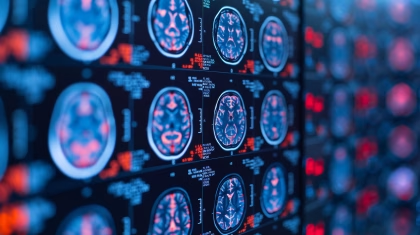Table of Contents
Introduction to Human Behavior in Practice
Understanding human behavior isn’t just an academic pursuit confined to labs and lecture halls; it has practical applications that permeate every aspect of our lives. From the way companies cultivate productive workplaces to the strategies educators use to engage students, the insights gleaned from studying human behavior inform and enhance various professional practices.
In the workplace, knowledge of behavior can transform organizational dynamics and employee satisfaction. In educational settings, it can revolutionize teaching methods and student interactions. In healthcare, it influences patient outcomes and the effectiveness of public health initiatives. Each of these areas benefits significantly from a deep understanding of how and why people act, react, and interact in the ways that they do.
This article explores the tangible applications of behavioral science across these critical fields, demonstrating how theoretical knowledge of human behavior is essential in crafting practical solutions to everyday challenges. We’ll look at real-world examples where psychological principles are effectively applied, highlighting the profound impact of behavioral science in improving both individual and collective well-being.
In the Workplace
The workplace is a dynamic environment where understanding human behavior can significantly enhance management strategies, employee satisfaction, and overall organizational effectiveness. By applying behavioral science, businesses can improve leadership, increase productivity, and foster a healthier work culture.
Leadership and Management
Effective leadership is often about understanding the behaviors and motivations of team members. Behavioral theories such as transformational leadership, which emphasizes inspiration and positive change, have shown to significantly impact employee motivation and performance [1]. Leaders who are aware of their own behavior and its impact on employees can better inspire and guide their teams towards achieving organizational goals.
Motivation and Job Satisfaction
Employee motivation is a key area where understanding human behavior is crucial. Theories like Herzberg’s Two-Factor Theory, which distinguishes between hygiene factors (e.g., salary, work conditions) and motivators (e.g., recognition, personal growth), provide valuable insights into what drives job satisfaction and productivity [2]. Applying such theories helps managers create environments that engage employees and reduce turnover.
Team Dynamics and Communication
Behavioral dynamics within teams can significantly affect their function and output. Understanding group behavior, facilitated through models like Bruce Tuckman’s stages of group development-forming, storming, norming, and performing-helps managers guide teams more effectively through various phases of project and team development [3]. Additionally, effective communication, grounded in an understanding of interpersonal behavior, can resolve conflicts and align team members towards common objectives.
Organizational Culture and Change
The culture of an organization is fundamentally about collective behavior. It shapes, and is shaped by, the behaviors of all individuals within it. Schein’s model of organizational culture emphasizes the importance of underlying assumptions, values, and artifacts in shaping organizational behavior [4]. Understanding these elements can be pivotal when attempting to implement organizational change, as it requires modifying not just procedures but the underlying behavioral norms.
Behavioral Economics in Decision-Making
Incorporating principles from behavioral economics can also enhance decision-making processes within the workplace. Understanding cognitive biases like confirmation bias or the anchoring effect can help in designing better decision-making frameworks that minimize these biases, leading to more rational and effective organizational decisions [5].
In conclusion, the workplace is a prime setting for the application of behavioral science. From improving leadership and communication to understanding motivation and organizational culture, the insights derived from behavioral studies are indispensable tools for enhancing workplace dynamics and achieving organizational success.
In Education
The application of behavioral science in education can profoundly influence teaching methods, learning environments, and student outcomes. By understanding how students behave and learn, educators can tailor educational experiences that maximize both engagement and retention of knowledge.
Behavioral Theories in Learning
Educational psychologists use behavioral theories to understand how students absorb and process information. For instance, B.F. Skinner’s operant conditioning can be applied to reinforce positive learning behaviors and discourage negative ones through rewards and consequences [6]. Similarly, Albert Bandura’s social learning theory emphasizes the role of observation and imitation in learning, suggesting that students can learn effectively by observing peers and instructors [7].
Personalized Learning
Behavioral insights allow for more personalized learning experiences. By recognizing that students have diverse learning styles-visual, auditory, kinesthetic-educators can design lessons that cater to these different styles, thereby improving student engagement and learning outcomes [8]. Moreover, understanding the behavioral needs of students with special education requirements enables teachers to adapt strategies that are more inclusive and effective.
Classroom Management
Effective classroom management is crucial for creating an environment conducive to learning. Behavioral science provides strategies that help educators manage classroom dynamics and maintain a focus on learning. Techniques such as positive reinforcement, setting clear expectations, and consistent consequences can help establish a stable and supportive classroom environment [9].
Motivation and Engagement
Understanding what motivates students is key to fostering engagement. Self-Determination Theory (SDT), which emphasizes the roles of autonomy, competence, and relatedness, can guide teachers in creating learning experiences that intrinsically motivate students by giving them a sense of control over their learning, opportunities to demonstrate competence, and a feeling of connectedness with others in the learning community [10].
Impact of Teacher Behaviors
Teachers’ behaviors significantly impact student outcomes. Studies have shown that teacher enthusiasm and responsiveness can enhance student engagement and motivation. Moreover, teacher expectations can profoundly influence student performance, a phenomenon known as the Pygmalion effect, where higher expectations lead to an increase in student performance [11].
In conclusion, the field of education greatly benefits from insights into human behavior. By applying these principles, educators can enhance learning experiences, tailor teaching methods, and create environments that nurture both academic and personal growth for all students.
In Healthcare
The application of behavioral science in healthcare settings is critical for enhancing patient care, improving treatment adherence, and managing public health initiatives. Understanding human behavior helps healthcare professionals optimize interventions, communicate effectively, and foster healthier behaviors among patients.
Doctor-Patient Communication
Effective communication between healthcare providers and patients is essential for successful healthcare outcomes. Research has shown that patient satisfaction and adherence to treatment plans improve significantly when doctors use clear, empathetic communication styles that consider patients’ emotional and informational needs [12]. Techniques such as motivational interviewing can further enhance this communication by actively engaging patients in their own health decisions, thereby increasing their commitment to treatment plans [13].
Health Behaviors and Lifestyle Changes
Behavioral science plays a pivotal role in influencing health behaviors and promoting lifestyle changes. Theories such as the Health Belief Model explain how patients’ beliefs about health problems, perceived benefits of action, and barriers to action can affect health-related behaviors, such as smoking cessation, dietary changes, and exercise routines [14]. Interventions designed around these models can effectively motivate individuals to adopt healthier behaviors.
Treatment Adherence
Non-adherence to treatment regimens is a significant challenge in healthcare. Behavioral interventions, such as reminder systems, rewards for adherence, and simpler medication regimens, have been shown to improve adherence rates. Understanding the psychological barriers to adherence, such as forgetfulness, misunderstanding of the treatment’s importance, or fear of side effects, allows healthcare providers to customize interventions that address these specific issues [15].
Chronic Disease Management
Behavioral strategies are integral to the management of chronic diseases, where patients must make ongoing lifestyle adjustments and adhere to complex medication regimens. Self-management programs that incorporate behavioral strategies can significantly improve outcomes for conditions like diabetes, hypertension, and heart disease by empowering patients to take active roles in managing their health [16].
Public Health Campaigns
Behavioral science also informs public health campaigns designed to educate and change behavior on a large scale. Campaigns that effectively change behavior often use principles from social marketing and behavior change theories to craft messages that resonate with target audiences, motivate action, and provide clear, actionable steps for achieving health goals [17].
In conclusion, integrating behavioral science into healthcare practices enhances patient care, improves adherence to treatment, and fosters effective management of public health issues. By understanding and applying the principles of human behavior, healthcare professionals can better meet the needs of their patients and lead more successful health interventions.
Conclusion
The practical application of behavioral science across various sectors-workplace, education, and healthcare-demonstrates its profound impact on improving outcomes and enhancing human well-being. In the workplace, understanding human behavior helps in crafting effective leadership, boosting productivity, and fostering a positive organizational culture. In education, it enables tailored teaching approaches that accommodate diverse learning styles and needs, enhancing student engagement and achievement. In healthcare, behavioral insights are crucial for effective communication, promoting healthy behaviors, improving treatment adherence, and managing chronic diseases.
By integrating behavioral science principles into these fields, professionals can address complex challenges more effectively and create environments that support positive outcomes. This interdisciplinary approach not only enriches the respective practices but also underscores the importance of human behavior in shaping societal progress and individual quality of life. As we continue to explore and apply these insights, the potential for innovation and improvement in managing human behavior in practice remains vast and vital.
Read more
Exploring Human Behavior: Why do We All React in Different Ways?
Understanding Human Behavior – A Physiological Approach
Human Behavior Research: The Complete Guide
How to code human behavior: Guide for behavioral coding
References
- Bass, B. M. (1985). “Leadership and performance beyond expectations.” ↩
- Herzberg, F. (1966). “Work and the Nature of Man.” ↩
- Tuckman, B. W. (1965). “Developmental sequence in small groups.” ↩
- Schein, E. H. (1985). “Organizational culture and leadership.” ↩
- Kahneman, D., Knetsch, J. L., & Thaler, R. H. (1986). “Fairness as a constraint on profit seeking: Entitlements in the market.” ↩
- Skinner, B. F. (1958). “Teaching machines.” Science. ↩
- Bandura, A. (1977). “Social learning theory.” ↩
- Fleming, N. D., & Mills, C. (1992). “Not Another Inventory, Rather a Catalyst for Reflection.” To Improve the Academy. ↩
- Emmer, E. T., & Stough, L. M. (2001). “Classroom management: A critical part of educational psychology, with implications for teacher education.” Educational Psychologist. ↩
- Ryan, R. M., & Deci, E. L. (2000). “Self-determination theory and the facilitation of intrinsic motivation, social development, and well-being.” American Psychologist. ↩
- Rosenthal, R., & Jacobson, L. (1968). “Pygmalion in the classroom: Teacher expectation and pupils’ intellectual development.” ↩
- Street, R. L. Jr., & Haidet, P. (2011). “How well do doctors know their patients? Factors affecting physician understanding of patients’ health beliefs.” Journal of General Internal Medicine. ↩
- Miller, W. R., & Rollnick, S. (2013). “Motivational Interviewing: Helping People Change.” ↩
- Rosenstock, I. M., Strecher, V. J., & Becker, M. H. (1988). “Social learning theory and the Health Belief Model.” Health Education Quarterly. ↩
- Sabaté, E. (Ed.). (2003). “Adherence to Long-Term Therapies: Evidence for Action.” World Health Organization. ↩
- Lorig, K. R., & Holman, H. R. (2003). “Self-management education: History, definition, outcomes, and mechanisms.” Annals of Behavioral Medicine. ↩
- Siegel, M., & Lotenberg, L. D. (2007). “Marketing Public Health: Strategies to Promote Social Change.” ↩











